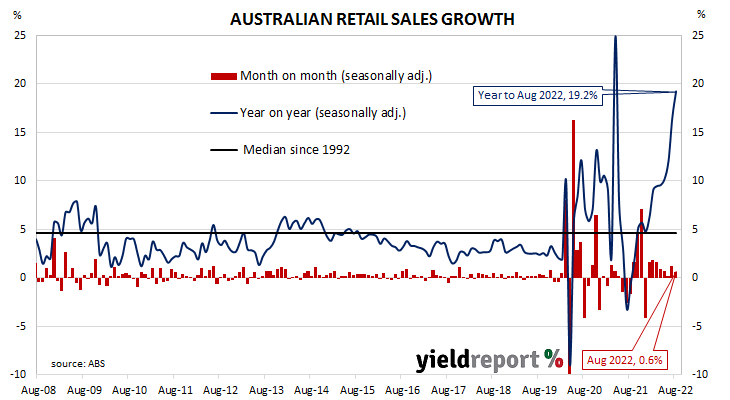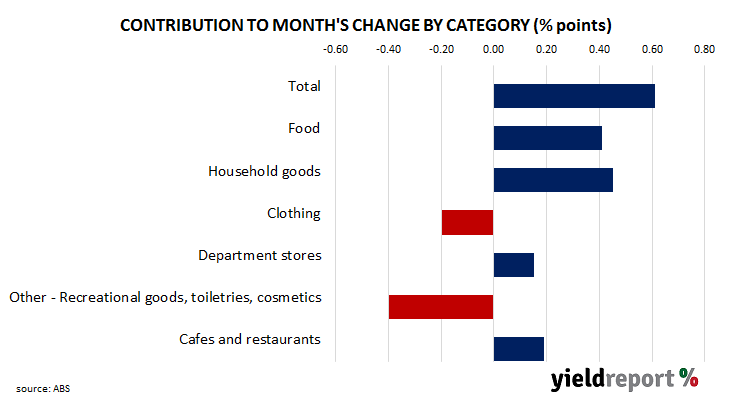Summary: Retail sales up 0.6% in August, greater than expected; “upside risk” for inflation, the peak cash rate; still averaging solid pace per month despite RBA rate rises; higher retail prices likely concealing “more pronounced softening” in volumes; largest influence on month from household goods sales.
Growth figures of domestic retail sales spent most of the 2010s at levels below the post-1992 average. While economic conditions had been generally favourable, wage growth and inflation rates were low. Expenditures on goods then jumped in the early stages of 2020 as government restrictions severely altered households’ spending habits. Households mostly reverted to their usual patterns as restrictions eased in the latter part of 2020 and throughout 2021, although not for all categories.
According to the latest ABS figures, total retail sales increased by 0.6% in August on a seasonally adjusted basis. The rise was greater than the 0.4% increase which had been expected but just under half of July’s 1.3% increase. On an annual basis, retail sales increased by 19.2%, up from July’s comparable figure of 16.5%.
“The longer household spending stays solid, the bigger the upside risk for inflation and the peak cash rate,” said ANZ senior economist Adelaide Timbrell.
Commonwealth bond yields increased on the day. By the close of business, the 3-year ACGB yield had inched up 1 bp to 3.84%, the 10-year rate had gained 7bps to 4.13% while the 20-year yield finished 8bps higher at 4.29%.
In the cash futures market, expectations of higher rates softened. At the end of the day, contracts implied the cash rate would rise from the current rate of 2.31% to 2.68% in October and then increase to 3.095% in November. May 2023 contracts implied a 3.81% cash rate while August 2023 contracts implied 4.24%.
“While gains have slowed a touch since the RBA began lifting the cash rate in May, they are still averaging a solid 0.6%-0.7% pace per month,” said Westpac senior economist Matthew Hassan. “Note that higher retail prices are likely concealing a more pronounced softening in retail sales volumes.” Even so, he thought “retail volumes were still ticking over at an above-trend pace in the quarter.”
Retail sales are typically segmented into six categories (see below), with the “food” segment accounting for nearly 40% of total sales. However, the largest influence on the total during the month came from the “Household goods” segment where prices increased by 2.6% on average over the month and thus contributed 0.45 percentage points of the 0.6% increase.



